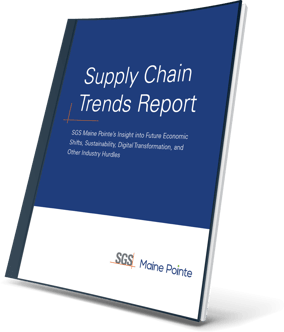Additional data we should have
The goal is data-driven decision making but the process of achieving that goal is often fraught. Companies struggle to understand the data they have, the importance of the data they lack, and the ways to unearth the data they need. The smooth functioning of the entire plan-make-buy-move supply chain depends on timely, accurate, complete, and trustworthy data.
Moreover, customers and regulators expect data to reflect marketplace trends, consistently maintain quality, and meet regulatory standards. Suppliers depend on accurate data to fulfill your orders accurately and with minimal returns.
The following data has particular significance for maintaining the health of your supply chain.
General data you need
- Accountability: Who is responsible for what? By clarifying owner, responsible, consult, and inform (ORCI) roles, you ensure that initiatives take root and communication flows.
- Financial KPIs: Have you optimized working capital? A three-pronged approach will give the best results: releasing cash, reducing costs, and improving service. Knowing where a company stands in each of these areas is an essential first step.
- Energy consumption: What is the environmental payback period for your current energy source and should you switch? Currently, for example, biomass energy has one of the longest payback periods, coupled with a short lifetime.
- Carbon emissions: What standards are you using to measure carbon emissions? Are you aware of industry figures and trends? You cannot ameliorate carbon unless you know your emissions starting point.
Procurement data
- Supplier performance: Are your suppliers meeting performance and quality goals? Are they aware of your goals? A drop in supplier performance may indicate that you need to rev up your communications and provide better information about expectations—before you begin shopping for new suppliers or tolerating low quality.
- Risk and disruption: Are all your suppliers in one country? Are you sole sourcing? Do you have more than one way to make deliveries or receive supplies? When you know how well your current procurement and logistics functions are working, you can prepare for disruptions and minimize risk.
- Demand data: How efficient are your forecasting systems? Do they consider only historical data or include trends?
Operations/manufacturing data
- Total cost of ownership: Have you accounted for both direct and indirect costs throughout the lifecycle? The more you know about total cost of ownership (TCO), the more likely you will find ways to reduce costs and improve quality.
- Overall equipment effectiveness: What percentage of your manufacturing time is productive, generating good parts as quickly as possible? A low number may indicate equipment that is idle, shut off during handovers, or not operating at peak performance.
- Capacity: Does planned capacity match actual capacity? What are the constraints? Is the footprint optimized? Before building or adding on capacity, you need to know if your manufacturing processes have been optimized and the footprint is being used fully and efficiently.
Logistics data
- Inventory data: What is your percentage of OTIF delivery? Supply and demand management prevents stockouts, excess supply, and obsolete inventory.
- Fleet management data: What is your fuel usage? How does 3PL or 4PL delivery compare to operating an in-house fleet? You need data to optimize your routes for delivery efficiency and fuel reduction.
Next steps
Given trustworthy data, key leaders need a way to access and interpret it for their own purposes; for example, through intelligent dashboards and self-generated reports. To ensure that important data is neither buried nor lost, complexity reduction initiatives should include aligning data with company goals, standardizing categories and labels, rationalizing SKUs, and similar initiatives.
A supplier of food ingredients struggled to maintain throughput and contain costs. Cancellations of orders left them with crippling demurrage charges. They lacked a sales, inventory, and operations planning (SIOP) process; needed improvements to their order entry and confirmation process; and lacked visibility into data hidden in their ERP system. With those changes and others, they increased throughput $135% at one plan and 275% at the other, with a 60% drop in order cancellation.
Data-driven decision making begins with knowing what data is most important to meeting your goals, defining it clearly, making sure everyone understands its importance, and giving decision makers access to it across the plan-make-buy-move supply chain.
Related Resources
Ready to improve your consumer demand forecasting?

Talk to us
From rapid sprints for short-term gains to transformation for competitive advantage we are here to get you there.
Schedule a discussion
Submit this form to speak to an SGS Maine Pointe representative.
Prefer a call? (781) 934 - 5569




